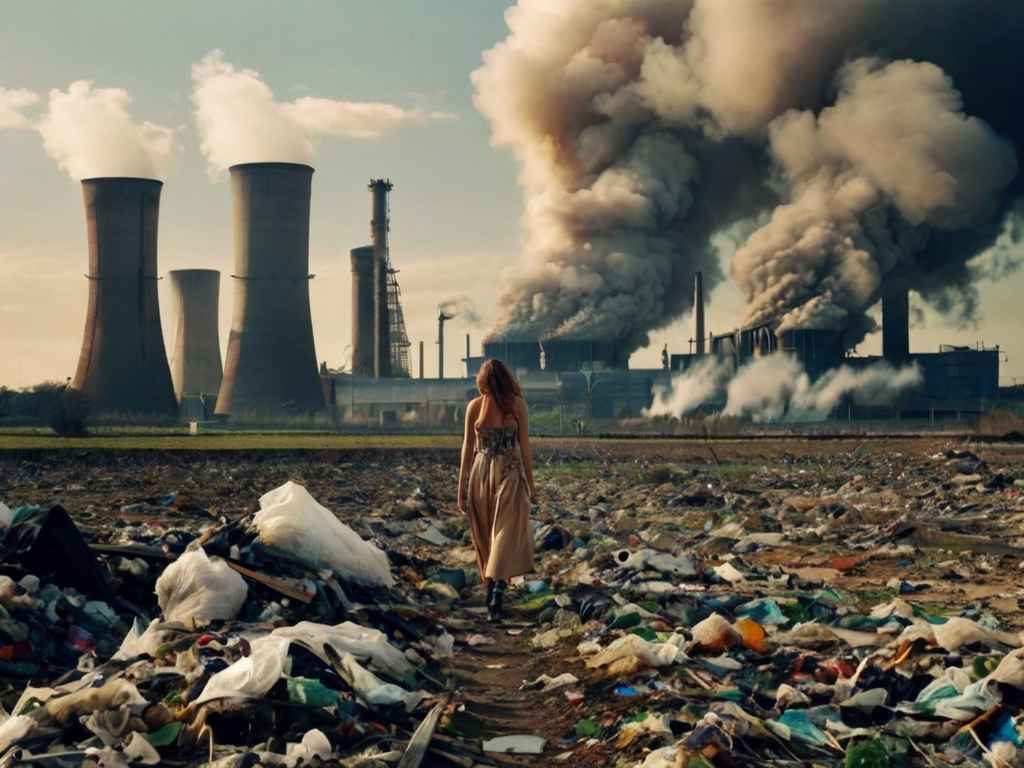Ever wonder how much water goes into making your clothes? One t-shirt can use enough water to keep someone drinking for 2 whole years. Shocking, right? The truth is that the fashion industry delivers the latest trends. It casts a long shadow on our planet and its people.
We revel in the newest designs. The production process often leaves a trail of environmental degradation. From overflowing landfills with discarded clothes to rivers choked with toxic dyes. Beyond the environmental toll, the human cost can be equally concerning. With reports of unfair labor practices and unsafe working conditions in garment factories.
But there’s a ray of hope. A movement is gaining momentum. It’s pushing for a fashion revolution. One built on sustainability and ethical practices. This movement is known as sustainable fashion. It aims to minimize the industry’s environmental footprint. And also ensure fair treatment of workers throughout the supply chain.
Buckle up, we’re about to delve into 20 eye-opening statistics that shed light on the state of the industry. And also the growing importance of sustainable fashion trends in 2024. These statistics will paint a clear picture of the challenges we face. We’ll learn how clothes are made, what problems they can cause, and how awesome sustainable fashion can be.
20 shocking statistics on sustainable fashion trends in 2024
The Shocking Environmental Impact
The fashion industry, while delivering trendy clothing. It leaves a significant footprint on our planet. Here’s a breakdown of some concerning statistics:
1. Water Woes:
Did you know producing a single t-shirt requires enough water to quench someone’s thirst for 2.5 years? Shocking, right? Textile production forms the foundation of garment creation. It contributes a staggering 20% to global wastewater.
2. Pollution Paradise:
The fashion industry is not just thirsty, but also a big polluter. It accounts for around 20% of global pesticide use. It may impact ecosystems and human health. Furthermore, the industry accounts for 20-35% of all ocean microplastic pollution. Specifically, synthetic clothing sheds small plastic fibers upon washing. Microplastics infiltrate the food chain. It threatens marine life and may have an influence on human health.
3. Fast Fashion’s Flaw:
The fast fashion companies, recognized for their fashionable and economical garments, have a hidden cost. It produces 20 billion garments annually. A large majority of it winds up in landfills within a year. It is contributing to overflowing landfills and environmental deterioration.
4. Leather’s Not So Green Side:
Leather manufacturing while designing fashionable clothing. It contributes significantly to deforestation, especially in the Amazon jungle. Deforestation destroys sensitive ecosystems and harms the environment.
5. Energy Guzzler:
The fashion industry is a hidden energy guzzler. It consumes a significant amount of energy throughout its production process. This energy consumption contributes to climate change, further impacting our planet’s health.
Social Impact
We often focus on the latest fashion trends. It’s important to acknowledge the human cost associated with garment production. Here are some unsettling realities:
6. Children Exploited, Not Empowered:
Unfortunately, the fashion industry continues to battle with the issue of child labor. This is especially true for poorer countries. This means that youngsters are compelled to work in factories rather than attending school and enjoying their youth. This exploitation requires our attention and a concerted effort to eradicate.
7. Unequal Exchange:
Many garment workers deal with tough realities. They labor long hours in hazardous conditions for poor pay. This unequal treatment raises ethical questions regarding the human cost of our apparel.
8. Polluting Communities:
The clothing industry’s influence extends beyond the factories. Its pollution, specifically the release of hazardous chemicals into rivers. All these organizations mutilate the health and well-being of the communities that live nearby. This underscores the importance of ecologically friendly practices throughout the fashion supply chain.
Sustainable Fashion Trends
The world of fashion is changing. We learned about some challenges. There’s also exciting news: sustainable fashion trends are on the rise. Here’s how things are getting better:
9. Secondhand Steals:
Instead of buying new clothes all the time, people are giving pre-loved clothes a second chance. This “secondhand” shopping is becoming super popular. The market is expected to reach a whopping $51 billion by 2025. It’s good for the environment and your wallet too.
10. Organic Cotton is Taking Over:
People choose clothes made from organic cotton grown without harmful chemicals. This is better for the planet and the people who grow the cotton. The demand for organic cotton is growing quickly, and it’s expected to be a $10.8 billion market by 2027.
11. Renting Clothes is the New Trend:
Want to wear something special for an event but want to avoid buying an outfit you’ll only wear once? Renting clothes is becoming a popular option. Companies like Rent the Runway and Le Tote let you borrow clothes instead of buying them. It’s reducing waste and saving you money.
12. People Care More About the Planet:
More and more people are thinking about how their clothes choices impact the environment and the people who make them. This is pushing fashion brands to offer more sustainable options.
13. Big Brands are Joining the Movement:
Big fashion companies realize sustainability matters. They’re starting to use recycled materials. It reduces their impact on the environment and treats their workers fairly.
These trends show that the fashion industry is moving towards a brighter future. By supporting sustainable brands and embracing these cool trends. We can all be part of creating a fashion world that’s kinder to our planet and the people who make our clothes.
Challenges and Opportunities
The path towards a sustainable fashion future is paved with both promising opportunities and persistent challenges. Here’s what we need to be aware of:
14. Greenwashing:
Unfortunately, some brands resort to “greenwashing,”. It’s making misleading claims about the sustainability of their products. This can be confusing for consumers who genuinely want to make responsible choices. It’s crucial to be critical and do your research to ensure brands are truly committed to sustainable practices.
15. Limited Access for Some:
The availability of sustainable clothing is increasing. It’s important to acknowledge that access to these options can still be limited for low-income consumers. This highlights the need for continued efforts to ensure affordability and inclusivity within the sustainable fashion movement.
Consumer Behavior
Consumers are playing a crucial role in driving the shift towards sustainable fashion. Here’s how:
16. Gen Z Leads the Charge:
The younger generation. Gen Z is leading the charge with its focus on sustainability. A whopping 62% of them are willing to pay more for clothes made with the environment and people in mind. This growing consciousness is pushing brands to prioritize sustainable practices.
17. Secondhand Luxury on the Rise:
The resale market for luxury goods is booming! It’s expected to reach a staggering $30 billion by 2025. It’s even surpassing the size of the traditional luxury market. This trend highlights a shift towards giving pre-loved items a second life and reducing the demand for brand-new luxury goods.
18. Renting Makes a Statement:
Gone are the days of needing to own every outfit you wear for special occasions. Renting clothes is becoming increasingly popular. Platforms, like Rent the Runway, allow individuals to experience different styles without the environmental impact of constant purchases.
19. Sustainable Shoes Gaining Traction:
Consumers are making conscious choices beyond clothing. The demand for sustainable footwear is skyrocketing. The market is expected to reach $48.5 billion by 2025. This signifies a growing desire for eco-friendly options throughout our wardrobes.
20. Transparency Takes Center Stage:
Consumers are demanding more transparency from brands. They want to know where their clothes are coming from, how they’re made, and under what conditions. This push for transparency is holding brands accountable and driving them to adopt ethical and sustainable practices throughout their supply chains.
Conclusion
The world of fashion may have had some concerning impacts on our planet and its people. But amidst these challenges, there’s a wave of optimism rising. A wave is driven by you, the conscious consumer.
The numbers we saw showed us how clothes can hurt the planet and the people who make them. But guess what? Things are getting better. By picking clothes that are good for the Earth, giving old clothes new life, and borrowing outfits for special days. And supporting companies that treat their workers well. You’re helping to make fashion kinder to our world and the people in it. Every smart choice you make counts, one step at a time.
Every smart decision you make about your clothes, every item you choose that helps the planet, is like taking a step towards a kinder fashion world. Together, let’s keep making changes and rewriting the story of fashion, piece by sustainable piece.

